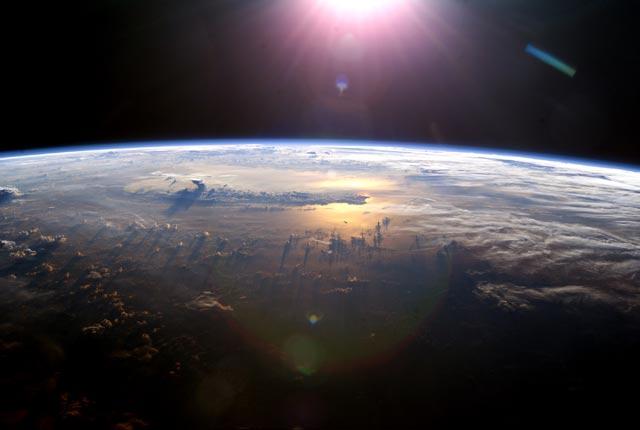Study finds ‘millions of tons’ of extremely reactive chemical in Earth’s atmosphere
Scientists say the newly discovered chemicals may be able to penetrate into aerosol

Scientists have discovered an entirely new class of super-reactive chemical compounds in the Earth’s atmosphere that they say may affect both human health and global climate.
The study, published in the journal Science, documented for the first time the formation of so-called trioxides – extremely oxidising chemical compounds with three oxygen atoms attached to each other.
“This is what we have now accomplished. The type of compounds we discovered are unique in their structure. And, because they are extremely oxidising, they most likely bring a host of effects that we have yet to uncover,” study senior author Henrik Grum Kjærgaard from the University of Copenhagen said in a statement.
In the new study, scientists have shown that hydrotrioxides, as they are known, are a completely new class of chemical compounds that form under atmospheric conditions.
Hydrotrioxides are a kind of hydrogen polyoxide, with water – containing two hydrogen atoms and one oxygen atom – being the simplest and most common of the type.
Hydrogen peroxide, containing two hydrogen and two oxygen atoms (H2O2) and commonly used as a bleach, is another such chemical compound.
Hydrotrioxides – written chemically as ROOOH, with R being any bonded group such as carbon – has three oxygen atoms attached to each other and are even more reactive.
The scientists say these chemicals form during the atmospheric decomposition of several known and widely emitted substances, including isoprene and dimethyl sulfide.
“It’s quite significant that we can now show, through direct observation, that these compounds actually form in the atmosphere, that they are surprisingly stable and that they are formed from almost all chemical compounds. All speculation must now be put to rest,” Jing Chen, a PhD candidate and second author of the study, said.
Researchers suspect that the lifespan of hydrotrioxides in the atmosphere ranges from minutes to hours.
Citing an example, scientists say isoprene – a chemical produced by many life forms and the main component of natural rubber – is one of the most frequently emitted organic compounds into the atmosphere that turns into these trioxides.
They say approximately 1 per cent of all isoprene released turns into hydrotrioxides.
Researchers estimate that the concentrations of ROOOH in the atmosphere are “approximately 10 million per cubic cm”.
In comparison, they say OH radicals, which are one of the most important oxidants in the atmosphere, are in the atmosphere at concentrations of about 1 million radicals per cubic cm.
They say the trioxides may also be able to penetrate into tiny airborne particles, known as aerosols, and could be stable enough to react with many other compounds in the atmosphere.
“They will most likely enter aerosols, where they will form new compounds with new effects. It is easy to imagine that new substances are formed in the aerosols that are harmful if inhaled. But further investigation is required to address these potential health effects,” Dr Kjærgaard said.
Scientists believe there is a “high probability” that this class of chemicals affects how many aerosols are produced, probably also impacting climate.
“As sunlight is both reflected and absorbed by aerosols, this affects the Earth’s heat balance – that is, the ratio of sunlight that Earth absorbs and sends back into space. When aerosols absorb substances, they grow and contribute to cloud formation, which affects Earth’s climate as well,” Eva R Kjærgaard, another co-author of the study, explained.
While the study suggests that there could be plenty of chemical compounds in the air that haven’t been found yet, researchers say they are not worried about the new discovery.
“These compounds have always been around, we just didn’t know about them. But the fact that we now have evidence that the compounds are formed and live for a certain amount of time means that it is possible to study their effect more targeted and respond if they turn out to be dangerous,” Dr Grum Kjærgaard explained.
“Indeed, the air surrounding us is a huge tangle of complex chemical reactions. As researchers, we need to keep an open mind if we want to get better at finding solutions,” Dr Jing Chen concluded.
Join our commenting forum
Join thought-provoking conversations, follow other Independent readers and see their replies
Comments
Bookmark popover
Removed from bookmarks